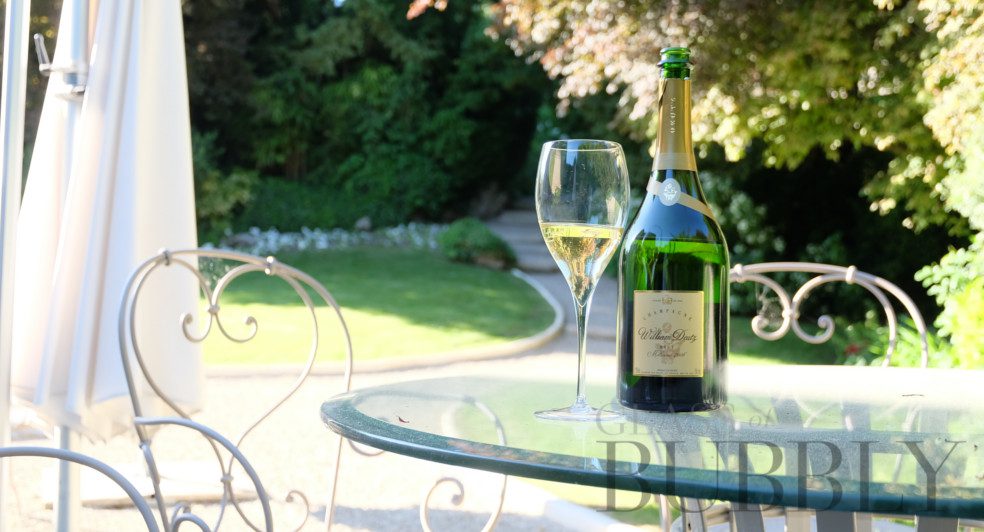Champagne Deutz – Will 2022 be a Good Vintage?
14th June 2022

At the time of going to press we can confirm that the 2022 vintage is looking to be much kinder than the previous one. Could this be nature’s way of apologising for the complications of the 2021 vintage? The weather overall has been positive for the growth of the vine. The absence of vine disease at this stage (despite the rain on 7, 8 and 9 June) is giving us hope that the remainder of the season will be more troublefree than the last and with more comfortable conditions for harvesting. So far there has been a marked contrast with the previous year, with a lack of rainfall up until 6 June. In 2021 so much rain had already fallen that we barely knew what to do with it!
The autumn and winter of 2021/2022 were characterised by warm temperatures and high levels of humidity. The days of cold winters with subzero temperatures have become increasingly rare in recent years. Such conditions are not beneficial to the vine’s health and make any mechanical work completely impossible. This leads to a delay in the grinding up of vine shoots.
Our winegrowers are usually busy with pruning work at this time of the year. Despite the complications of the 2021 vintage, our reserves were not impacted in our vineyards and the shoots are strong and well hardened which spells good news for pruning.
Winter frosts are a thing of the past whilst the spring frosts generally occur in the early part of the season. There were two frosty spells this year. On 4 April temperatures dropped as low as -8°C in certain parts of our vineyards just as the vines were waking up from their winter dormancy. Fortunately, the weather was dry and windy and there was very little damage caused by this first spring frost.
Heavy rainfall on 7, 8 and 9 April (the most recent to date) gave our vines a healthy dose of humidity. Anticyclonic conditions set in on the afternoon of the 9 April and pushed away the clouds. The starry sky was a sign of the cold temperatures that would follow on the night of 9 April. In the morning the temperatures were subzero and the vines were covered by a fine layer of white frost. The damage was done and we recorded an 8% loss of buds across all of our vineyards.
The vine nonetheless resumed its development and the average dates for bud burst this year were 11-16 and 19 April respectively for our Chardonnays, Pinot Noirs and Meuniers. These dates are almost in line with the ten-year average.
The sun and warm weather have since returned and the soils have gradually begun to dry. The younger vines were very thirsty and we had to water them. This lack of water has nonetheless had its benefits: the risk of vine disease is low and the mechanical soil work was carried out in good conditions which has enabled us to keep the weeds at bay.
Temperatures soared from 14 May and were well above the average for this period. High temperatures at this time of the year are highly beneficial for the growth of the vine. The shoots had a growth spurt with some gaining as many as 4 leaves in just a week. The first flowers appeared on the vines on 13 May and vine lifting work began on 19 May.
We’ve found ourselves with all the pointers to an early vintage.
As is the case every year, there is an intrinsic variability between the terroirs and vineyard plots. This year we can confirm that flowering was complete on our Ay Pinot Noirs on 28 May and our Bisseuil Chardonnays were around the same date. The Côte des Blancs had fully flowered by 31 May. Our Meuniers have been a little slower to ripen and will likely have fully flowered by around 6 June.
This early flowering has us expecting an early harvest. Whilst it is an undisputed fact that early flowering means early ripening, there is also another phenomenon that often speeds up maturation. The fruit now has a tendency to ripen earlier in the season owing to higher temperatures and longer hours of sunshine in the day. This creates a phenomenon of acceleration which further speeds up the ripening of the fruit. In such a context it is not rare to find ourselves with less than the standard 85 days between flowering and harvesting.
In the vineyards and cellars alike, our teams are therefore getting ready to cut their summer vacations short to be ready to begin harvesting in late August. We are all hoping that high quality and quantity will be on the cards to allow us to create some truly outstanding wines this year.
![]()
Glass of Bubbly
Executive editor of news content for the website Please enjoy the articles that we share - We hope you find our love for Champagne & Sparkling Wines both interesting and educational.
